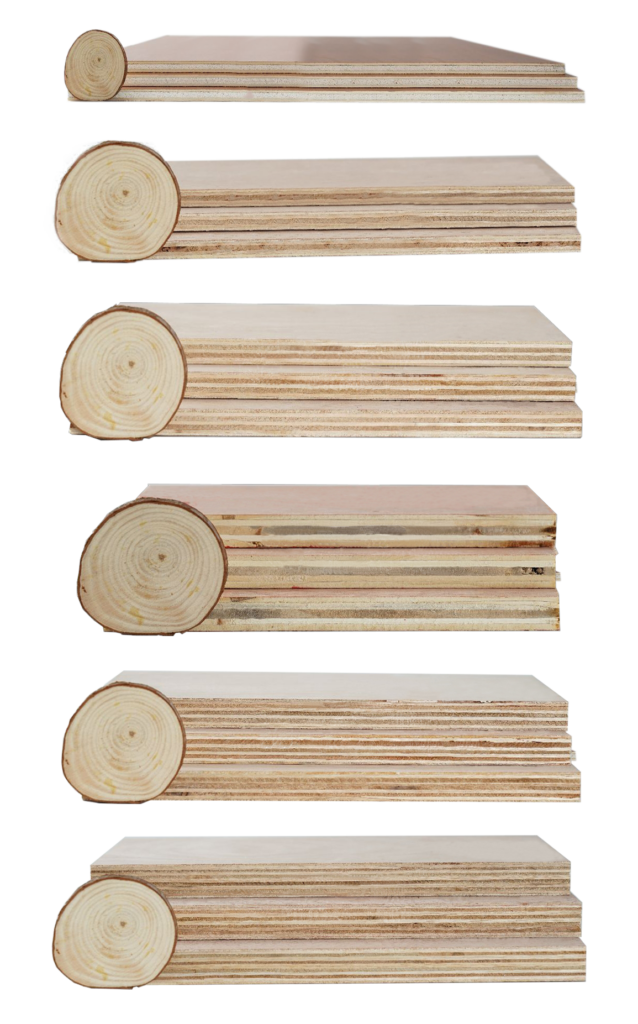What Are the Different Grades of Plywood?
If you’re looking for the correct grade of plywood for your project, you’ve certainly seen that there are plenty to pick from. The diversity might be overwhelming, and the labelling can further complicate matters. What are the different grades of plywood? Plywood veneer grades are classified into four categories. These are letters A, B, C, and D. There are two grades of plywood in each sheet of plywood. This compound is represented by the letters AB, AC, and so on.
The first letter reflects the grade of the face veneer, while the second letter denotes the grade of the rear veneer.
If the plywood compound has an X at the end, it is “exposure” plywood and can be exposed to some dampness. The letters progress in the same way that grades do in school, with A being the highest and D being the lowest.
Different Grades of Plywood
A-grade plywood: The highest quality and most expensive plywood, as most sheets will be free of faults. This is a wonderful alternative if you want smooth plywood that can be easily painted.
B-grade plywood is another alternative for a nearly perfect sheet of plywood. B-grade plywood has a solid basis and a fairly smooth surface. This plywood may have been repaired, but B-grade would contain only minor faults.
C-grade plywood is of lower quality and has knots up to 1.5 inches in diameter across its sheets.
D-grade plywood sheets are the most affordable. They haven’t been corrected, therefore the defects are larger and more visible. This plywood grade can have knots up to 2.5 inches long.
Difference Between Project Plywood and Construction
Construction plywood is a widespread material for building garages and roofing houses, as well as for household projects such as cabinet construction.
Here are some labels that distinguish the two:
CDX: CDX-grade plywood is a low-cost plywood material composed of the two lowest classes, C and D. The X indicates that this material can resist some moisture exposure. CDX is frequently used to create work tables and storage units.
Sanded Pine: Sanded pine is a versatile type of plywood. It has a clean and smooth surface and is good at holding nails and screws. This type of plywood is often utilised in the construction of cabinets and boxes.
Baltic Birch: Baltic birch is another versatile plywood material. This is a more expensive option because of its clean edges and beautiful finish.

Plywood Options for Indoor and Outdoor Use
Even while most plywood makers will be upfront about whether or not a material can survive external elements, it’s useful to have a basic awareness of the specs of each type of plywood.
Plywood for Indoor Applications
Sanded plywood: Pine veneer is a fantastic alternative for a high-quality plywood material that can be utilised indoors. Sanded Pine BC or Sandeply could be used to label this material. It’s a low-cost material utilised for tasks like cabinetry and shop furnishings.
Oriented Strand Board: Also known as wafer board, Oriented strand board has a flaky appearance due to the fact that it is formed from wood chips. This sort of plywood sheet features a patchwork design with wood chips glued together in a variety of shapes, sizes, and colours.
Plywood for Outdoor Applications
Although some Different Grades of Plywood may endure snow, rain, and other external elements, there is no guarantee that plywood will last. This will be determined by moisture, heat, and other environmental conditions.
Pressure-treated plywood: If you want a plywood that is resistant to mould and mildew, pressure-treated plywood has been chemically treated to keep it safe. Without paint or any form of protective coating, this material might persist for years.
CDX sheathing: Made from the two lowest grades of plywood, C and D, this type of plywood material is used for sheathing. It’s a cheap material that shouldn’t be left exposed. Roofs, storage bins, and garages are often covered with bricks or shingles.
We have a vast assortment of plywood options at Forest Plywood so you can discover the correct plywood grade for your next project.


Leave a Reply